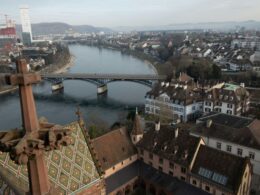The creation of three distinct volumes in this ground-floor rear extension of a family home in Brarnet, North London, allows for an abundance of natural light to flood the entire house and double the size of the internal living space.
Deconstructing the original layout of the ground floor, XUL Architecture sought to open up the internal configuration at the rear to create three large spaces, each containing a unique function: entertainment, family dining and kitchen.
The design centres on the creative use of natural light, and a novel application of Virtual Reality technology during the design process.
XUL Architecture believe natural light is essential for our minds and bodies. We all need it to feel happy, healthy and balanced. Well-being from light is closely tied to nature-based design and to environmental sustainability.


“When our clients came to us a couple of years ago, they had plans from their previous architect who was proposing a large standard box extension,” says director Sebastian Sandler.
“They already had planning permission from Barnet Council for a ground-floor rear extension to double the footprint of the house, but they found it ‘just so boring’. Naturally we jumped at the chance to deconstruct the layout.”
As the internal depth of the house was to be significantly expanded, the main challenge was in bringing light to the centre of the building. The solution was to divide the rear extension into three volumes; two large, outer volumes and a middle volume, slightly smaller in scale, with a flat roof to allow for large windows to sit between the higher and lower volumes and allow light to flood in.
A glass link was then proposed as a connection between the largest of the three rear volumes and the existing house, creating a double-height hallway vestibule that allows even more natural light to flow into the centre of the home.


The two outer volumes have sloping roof lines that allow for greater internal height, housing the kitchen and living areas respectively. Each volume has picture windows that frame views of the garden beyond, drawing the eye out to the verdant flower beds and meticulously manicured lawn.
The middle volume is enhanced by the addition of two internal courtyards, helping to balance the circulation of the space without the need for doors or partitions, and bringing additional light and ventilation into the heart of the home.
These internal courtyards create ‘pockets of joy’ within the interior living space, extending the garden’s sense of tranquillity into the home.


“For this project, we used VR technology to give the client a detailed image of the project as it was in development,” explains Sandler.
“We asked the clients to the office and gave them VR Goggles and invited them to walk through their future home. It was wonderful to see them smiling and giggling and in total awe.
“Some clients find it difficult to visualise from 2D plans and drawings, so this became a wonderful tool during the whole design process, as we could update the model as the design progressed.
“The finished house looks very close to what the model showed!”













